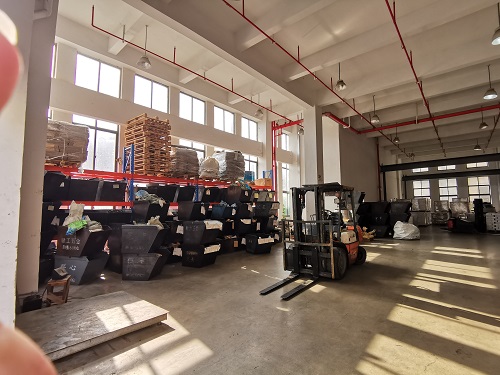What is a Railway Track Welded Forging Press Plate Hole Type?
2024-11-28
In the world of railway infrastructure, the production of high-quality tracks is essential for ensuring the safety, durability, and performance of railways worldwide. One critical component in the manufacturing process of railway tracks is the welded forging press plate hole type, a specialized piece of equipment used in the production and joining of railway rails. But what exactly is this component, and why is it so important for the rail manufacturing industry?

What is a Railway Track Welded Forging Press Plate Hole Type?
The railway track welded forging press plate hole type refers to a specialized forging press plate used in the process of joining or welding railway rails. During the manufacturing of railway tracks, the forging press plate is used to press and shape the rails with extreme pressure, often in a process called thermit welding or flash butt welding. These types of welding are used to join segments of track to create continuous lengths of rail, which are crucial for long-distance train travel.
The "hole type" refers to specific features or holes in the press plate that accommodate or align with the rail's geometry. These holes ensure that the rail is correctly positioned and securely fastened during the forging and welding process. The precision of the hole type is vital for ensuring a perfect weld that can withstand the heavy stresses and wear experienced by railway tracks.
How Does the Welded Forging Press Plate Hole Type Work?
1. Positioning and Alignment:
The forging press plate is designed with specific holes that align with the rails. These holes guide the rails into place, ensuring precise alignment before the forging press applies the necessary force. Accurate alignment is critical for the welding process because even the slightest misalignment can lead to weak or faulty welds that might compromise the integrity of the track.
2. Heat and Pressure Application:
Once the rails are properly positioned in the press plate, intense heat and pressure are applied to create a welded joint between the rail segments. This process typically involves the use of high-temperature welding methods like thermit welding or flash butt welding, where molten metal or high electrical currents are used to fuse the rails together.
3. Ensuring a Strong Bond:
The plate’s design and the hole type ensure that the rails remain firmly in place throughout the process. By applying uniform pressure across the rail's surface, the forged plate helps create a robust, strong, and durable weld that can withstand the dynamic loads and extreme forces that rail tracks face during operation.
4. Post-Welding Inspection:
After the welding process, the welded rail is inspected for quality, often using techniques like ultrasonic testing to detect any defects or inconsistencies. The precision achieved with the forged press plate and its hole type contributes significantly to the overall strength and reliability of the welded joint.
Why is the Welded Forging Press Plate Hole Type Important?
1. Improved Rail Strength and Durability:
One of the primary benefits of using a railway track welded forging press plate hole type is that it ensures the weld is strong, uniform, and durable. The proper alignment and pressure application help to create a joint that can withstand the weight of trains, environmental stresses, and constant wear. This leads to longer-lasting rails and reduced maintenance costs over time.
2. Enhanced Precision in Manufacturing:
The design of the press plate with precise holes allows for accurate positioning and alignment of the rails. This precision is essential in the rail industry, where even minor discrepancies in rail alignment can result in weak welds or compromised track performance. Using a specialized forging press plate ensures that the rails are welded together with high accuracy, enhancing the quality of the final product.
3. Cost-Effective and Efficient Production:
The use of a welded forging press plate with a hole type streamlines the rail manufacturing process. By automating the alignment and positioning of the rails during welding, the overall process becomes faster and more efficient. This reduces labor costs, increases throughput, and minimizes errors in the production process, making the manufacturing of railway tracks more cost-effective.
4. Safer Rail Systems:
Railway tracks are subjected to extreme mechanical stresses from trains, weather, and other environmental factors. A strong and precise welded joint, achieved using the correct forged press plate, ensures that the tracks remain stable and safe for use over time. The integrity of the weld directly impacts the safety of the entire rail system, preventing track failures or derailments caused by weak or improperly welded joints.
The railway track welded forging press plate hole type is an indispensable tool in the production of high-quality, durable railway tracks. Its role in ensuring precise alignment, consistent pressure application, and strong welds helps improve the overall safety, durability, and efficiency of rail systems worldwide. As railways continue to be a crucial part of global transportation infrastructure, the importance of advanced manufacturing techniques like the welded forging press plate hole type will only continue to grow. By enhancing the strength and longevity of rail joints, these forging plates contribute to the smooth operation of trains, reduce maintenance costs, and ultimately ensure the safety and reliability of the railway network.
Jiaxing Aoke Hardware Technology Co., Ltd is founded in 1986, has decades of stamping parts production experience. Business scope includes processing and sales: furniture connecting bracket, furniture brace, sofa leg, home appliance filter, construction angle,etc. AOKE warmly welcome you to visit plant and wish we could build a long-term business relationship in the future. Explore our full range of products on our website at https://www.aokestamping.com/. For any inquiries, please reach out to us at info@aoketrade.com.


























